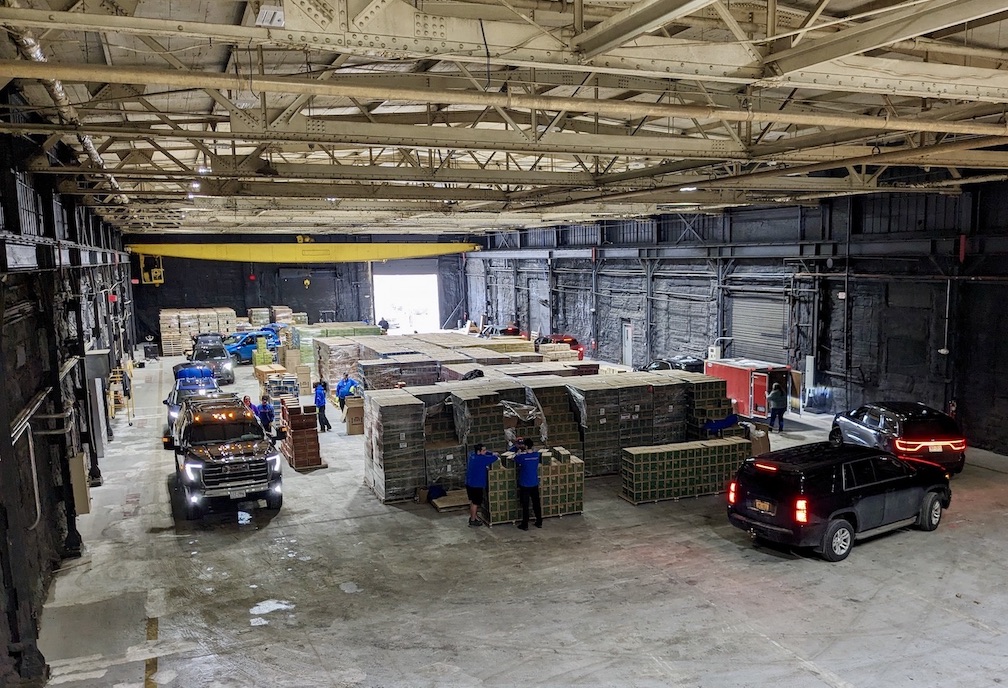Featured News - Current News - Archived News - News Categories
Partnership with National Weather Service aims to educate on impacts of severe weather and preparedness efforts ahead of summer months
Gov. Kathy Hochul announced the start of Severe Weather Awareness Week in New York state, highlighting the need for New Yorkers to have a plan and stay informed for when severe weather strikes. The annual campaign is a partnership between New York state, the National Weather Service, local and volunteer agencies and private sector organizations to educate New Yorkers about the hazards of severe weather during the spring and summer months. Severe weather, by definition, includes flash flooding, severe thunderstorms, and tornadoes.
"Severe weather is often dangerous and unpredictable, but the steps we collectively take to prepare can minimize the devastating impacts it could have on our daily lives," Hochul said. "I encourage all New Yorkers to spend time this week learning about the risks we face from severe weather, and what we can do to protect ourselves and embolden our efforts to remain disaster-ready."
Hochul’s team said, “Thunderstorms and lightning are unpredictable and can become very dangerous without advance warning. Flooding is the No. 1 weather-related cause of death in the United States, with most flood-related deaths occurring from vehicles being swept away by floodwaters. More than 500 tornadoes have been reported in New York state since NOAA began recordkeeping in 1952, with almost each county in the state having experienced at least one tornado in that time.”
New York State Division of Homeland Security and Emergency Services Commissioner Jackie Bray said, "DHSES works year-round with our government partners at the local, state and federal level to enhance severe weather monitoring capabilities, improve training for emergency responders, and educate the public. It's important for every New Yorker to know the risks and stay informed ahead of potential severe weather this spring and summer."
Hochul and Bray outlined the four steps to emergency preparedness, and what New Yorkers can do to keep themselves and their families safe from disaster:
•Develop a plan for you and your family at home, school, work and outdoors. Identify a safe place to take shelter and know what actions to take when a warning is issued. Consider pets when planning for an emergency.
•Build a kit of emergency supplies to last at least 10 days. Include flashlights, weather radio, and extra batteries. You should have one kit each for your home and your vehicle. Plan for any medical needs your family may have. Keep emergency supplies for pets.
•Stay tuned to TV and radio stations that broadcast Emergency Alert System (EAS) messages and follow local emergency orders when issued. Receive emergency information direct to your computer or cell phone by subscribing to NY Alert at https://alert.ny.gov, a free service that provides you with critical emergency information when you need it most.
•Consider visiting your local emergency management office to learn more about how to protect you and your family. Consider volunteering with organizations such as the American Red Cross, New York Cares or the Salvation Army.
Severe Weather Safety Tips
Disaster Supplies
Have disaster supplies on hand, including:
√ Flashlight and extra batteries
√ Battery-operated radio and extra batteries
√ First aid kit and manual
√ Emergency food and water
√ Non-electric can opener
√ Essential medicines
√ Checkbook, cash, credit cards, ATM cards
Flash Flooding
√ Never attempt to drive on a flooded road. Turn around and go another way.
√ If water begins to rise rapidly around you in your car, abandon the vehicle immediately.
√ Do not underestimate the power of fast-moving water. Two feet of fast-moving flood water will float your car, and water moving at two miles per hour can sweep cars off a road or bridge.
Lightning
√ Follow the 30-30 rule: If the time between when you see a flash of lightning and hear thunder is 30 seconds or less, the lightning is close enough to hit you. Seek shelter immediately. After the last flash of lightning, wait 30 minutes before leaving your shelter.
√ Lightning hits the tallest object. If you are above a tree line, quickly get below it and crouch down if you are in an exposed area.
√ If you can't get to a shelter, stay away from trees. If there is no shelter, crouch in the open, keeping twice as far away from a tree as it is tall.
Tornado
√ If outdoors and a tornado warning is issued, seek shelter immediately. If there is no shelter nearby, lie flat in a ditch or low spot with your hands shielding your head.
√ If at home or in a small building, go to the basement or an interior room on the lowest floor of the building. Stay away from windows. Closets, bathrooms and other interior rooms offer the best protection. Get under something sturdy or cover yourself with a mattress.
√ If in a school, hospital, or shopping center, go to a predesignated shelter area. Stay away from large open areas and windows. Do not go outside to your car.
√ If in a high-rise building, go to an interior small room or hallway on the lowest floor possible. Do not use elevators – use stairs instead.
For more information on personal preparedness and how to stay safe during severe weather, visit: https://www.dhses.gov/safety.





























